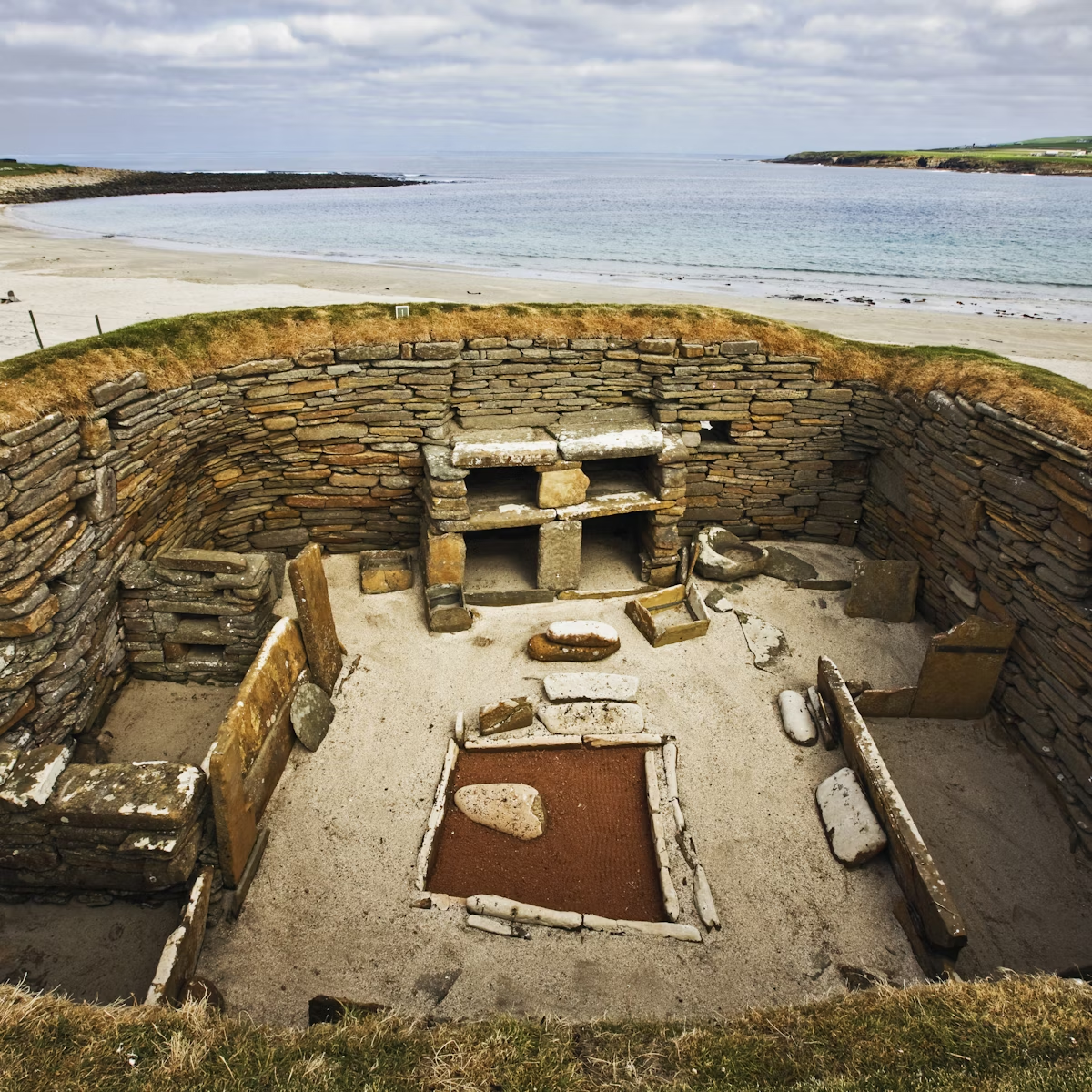The spectacular finds from ongoing excavations at this archaeological site between the Standing Stones of Stenness and the Ring of Brodgar have revolutionised understanding of the neolithic in Britain. Evidence of a major settlement centred on a monumental building has been revealed, dating from the fourth and third millennia BC. There have been some spectacular finds. During the summer dig season, there are free guided tours Monday to Friday; check the website for times and dates.
Lonely Planet's must-see attractions

5.72 MILES
Predating Stonehenge and the pyramids of Giza, extraordinary Skara Brae is one of the world's most evocative prehistoric sites, and northern Europe’s best…

0.99 MILES
Constructed about 5000 years ago, Maeshowe is an extraordinary place, a Stone Age tomb built from enormous sandstone blocks, some of which weighed many…

20.6 MILES
Two significant archaeological sites were found here by a farmer on his land. The first is a Bronze Age stone building with a firepit, indoor well and…

9.2 MILES
Constructed from local red sandstone, Kirkwall's centrepiece, dating from the early 12th century, is among Scotland's most interesting cathedrals. The…

23.61 MILES
A half-mile west of Pierowall stands this sturdy ruined tower house, built in the 16th century by Gilbert Balfour, aide to Mary, Queen of Scots. The…

11.77 MILES
Six miles from the ferry on Rousay, mighty Midhowe Cairn has been dubbed the 'Great Ship of Death'. Built around 3500 BC and enormous, it's divided into…

26.66 MILES
By the seashore, this sturdy stone-built farmhouse and storeroom are solidly built testimony to crofting life on Papa Westray island…5500 years ago. An…

9.53 MILES
This distillery, South of Kirkwall's centre, is great to visit. Despite a dodgy Viking rebrand, it's a serious distillery that malts its own barley; see…
Nearby Orkney attractions
1. Barnhouse Neolithic Village
0.34 MILES
Alongside the Standing Stones of Stenness are the excavated remains of a village thought to have been inhabited by the builders of Maeshowe. Don’t skip…
2. Standing Stones of Stenness
0.36 MILES
Part of this Mainland area's concentration of neolithic monuments, four mighty stones remain of what was once a circle of 12. Recent research suggests…
0.56 MILES
A mile northwest of Stenness is this wide circle of standing stones, some over 5m tall. The last of the three Stenness monuments to be built (2500–2000 BC…
0.99 MILES
Constructed about 5000 years ago, Maeshowe is an extraordinary place, a Stone Age tomb built from enormous sandstone blocks, some of which weighed many…
1.42 MILES
This atmospheric neolithic tomb, on a smaller scale than nearby Maeshowe, is a site that you may well get to yourself. It's a very tight squeeze down the…
3.79 MILES
This gallery has really rejuvenated the Orkney modern-art scene with its sleek lines and upbeat attitude. It’s worth a look as much for the architecture…
4.11 MILES
This superb museum, run with great passion, is full of knick-knacks from maritime and natural-history exhibitions covering whaling, the Hudson's Bay…
5.5 MILES
This tiny, low-lying agricultural island between Hoy and Stromness once supported a healthy population of crofting families (more than 200 people in 1841)…